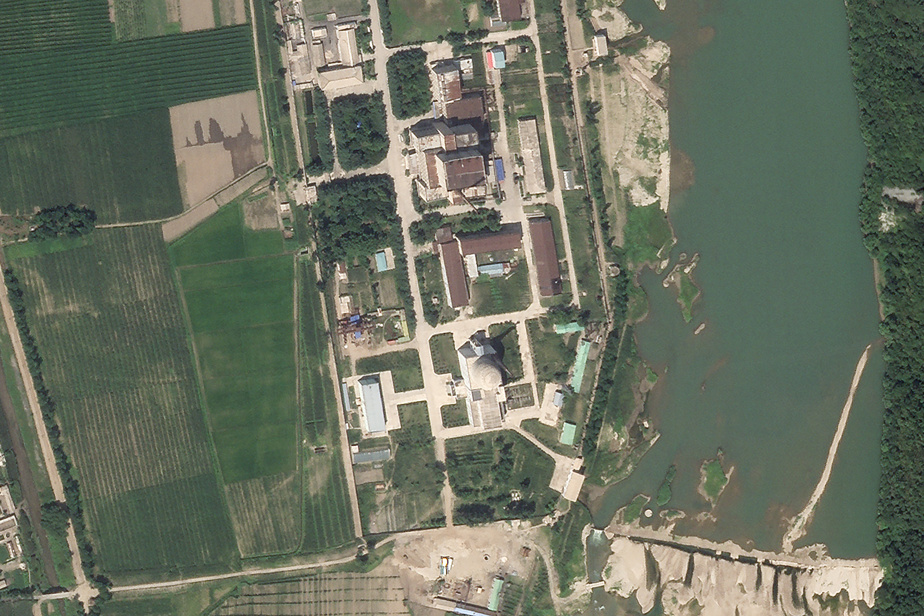(Seoul) A new nuclear reactor in North Korea appears to have become operational, the International Atomic Energy Agency (IAEA) said on Thursday, as Pyongyang steps up its threats to use nuclear weapons against the United States and their allies.
Located about 100 km north of Pyongyang, the Yongbyon complex already houses the country’s first nuclear reactor, with a capacity of five megawatts.
Since mid-October, a “strong flow of water” from the cooling system of a light water reactor (LWR) has been observed, IAEA Director General Rafael Grossi said in a statement.
“More recent observations show that the water released is hot, which is consistent with commissioning” of a reactor, he noted.
Such a process takes time, however, and without access to the facility, the IAEA cannot precisely confirm its operational status, Grossi added.
“Like any other nuclear reactor, an LWR can produce plutonium with its spent fuel, which can be separated during reprocessing, so this is a source of concern,” he further warned.
Since its inspectors were expelled from North Korea in 2009, the IAEA has been limited to monitoring nuclear developments in the country with satellite images.
North Korea conducted its first nuclear test in 2006. Its sixth and final one to date, in 2017, was also its most powerful.
Observers have been raising growing concerns for months about the possible preparation of a new North Korean nuclear test.
Earlier this year, the country’s leader Kim Jong-un called for increasing production of “military nuclear material” in order to “exponentially” increase the production of atomic weapons.
North Korea will not hesitate to respond with atomic weapons if it itself is “provoked” by nuclear weapons, Kim Jong-un threatened this week.
On Monday, his regime carried out a test of the most powerful intercontinental ballistic missile (ICBM) in its arsenal, the Hwasong-18, which appears capable of reaching the entire American territory.
